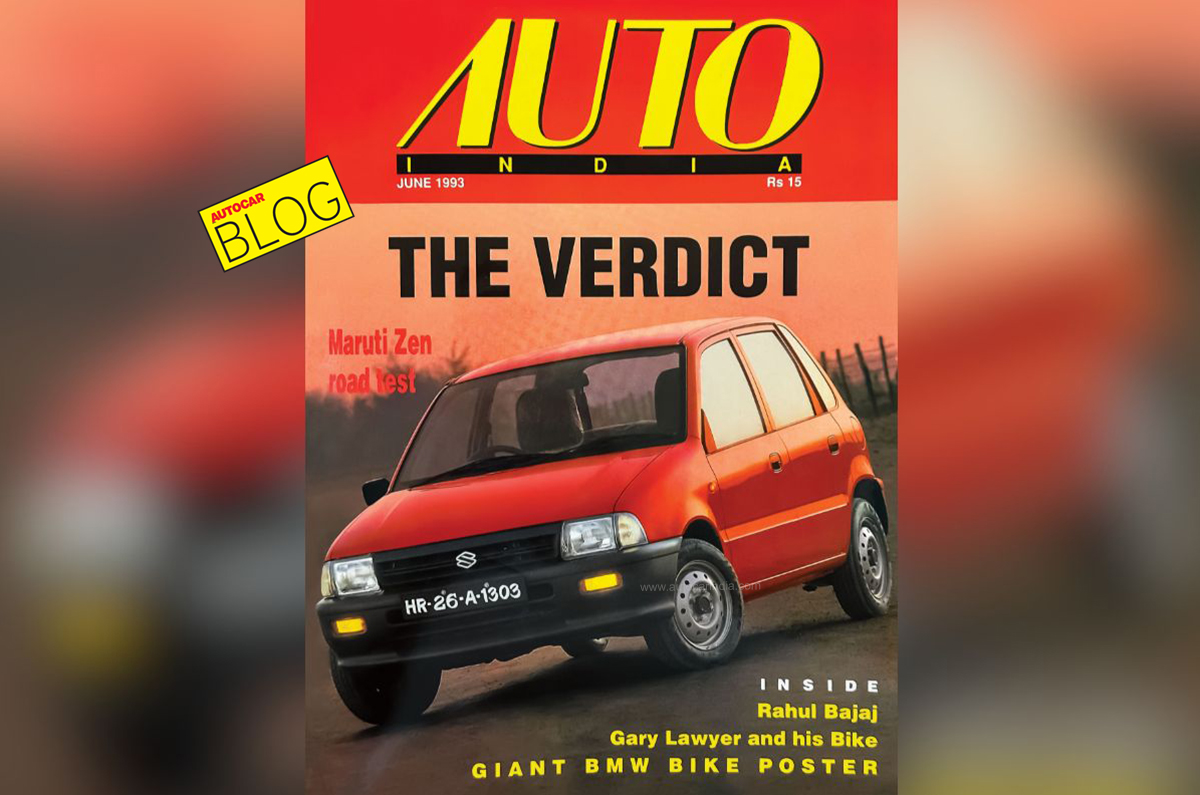
It’s been 30 years since Maruti launched the Zen, and it’s additionally been 30 years since I launched Auto India journal alongside my colleague Gautam Sen, who was the editor on the time. The finest solution to launch a brand new journal is with a mega unique. Just like we did with the inaugural challenge of Autocar India in September 1999 – that includes a world unique of the Ford Ikon on the quilt – Auto India was additionally launched with a bang again in June 1993, with an unique highway take a look at of the Zen.
Although each the Zen and Auto India are lengthy gone now, my reminiscences of that cowl shoot at Bandra-Kurla Complex (BKC) in Mumbai are nonetheless vivid. Three many years in the past, BKC was a marshy, secluded and undeveloped space infested with mosquitoes. I vividly bear in mind being feasted upon by these mosquitoes on a sizzling and humid May morning as I waited for the solar to rise within the east. This shoot was notably necessary as a result of Auto India was, imagine it or not, the first-ever all-colour automotive journal in India, and we needed to profit from it with distinctive images. That cowl propelled Auto India to grow to be India’s best-selling auto journal, with a peak circulation determine of 1,02,000 as per the Audit Bureau of Circulations (ABC). The January 1998 challenge was the zenith for Auto India, that includes one other unique gem on the quilt – the Indica!
In distinction, the Zen had a rocky begin on account of its “eye-watering” worth of Rs 2.8 lakh. Yes, “eye-watering” certainly, particularly when you think about that the Maruti 800 price half as a lot. The Zen was undeniably costly, nevertheless it felt like a European car, providing a stage of high quality that was mild years forward of the rest obtainable in India on the time. I nonetheless recall being gobsmacked by the Zen’s exquisitely completed dashboard, that includes soft-touch plastics and finely textured grain. It was a stark distinction to the 800 – India’s staple car in opposition to which each car was measured – which had a dashboard that felt prefer it was made from cardboard.
The knobs, the buttons and the steering wheel felt completely premium for a car born within the early Nineteen Nineties and the Zen oozed a ‘foreign car’ expertise proper all the way down to its odor. Of course, the Zen quickly discovered a fan following and went on to grow to be a cult car and it’s not arduous to know why. The zippy efficiency (quicker than some other Indian car on the time) and cheeky ‘jelly-bean’ styling made the Zen a lovable little hatch anybody with cash aspired to personal. The 1.0-litre engine made from all-aluminium (one other first) was a rev-happy little jewel and the five-speed gearbox was slick and clean. Who would have thought that with all of 51hp, the Zen could be topped by followers and followers as India’s first sizzling hatch? Power and efficiency was not the purpose. The Zen was a bundle of enjoyable and the one true driver’s car of the day. But was it?
To be sincere, I used to be by no means an enormous fan of the unique Zen and thought it was a bit overrated after having pushed one extensively. Maybe it’s as a result of I used to be an excessive amount of of a fanboy of the Maruti 800, which I raced and rallied (and even rolled!). For me, the ‘People’s Car’ was truly higher than its superstar brother in some ways. Firstly, the Zen’s massively oversquare 1-litre engine had no backside and also you needed to rev the socks off the motor to get essentially the most out of it. It lacked the perky and instant throttle response of the 800’s three-cylinder 796cc motor, which felt extra easy to drive in the actual world.
It was trendy to say the Zen had sensible dealing with, however the fact is, the steering lacked an on-centre really feel and wasn’t as fast or correct because the 800’s sensible rack-and-pinion. Also, the Zen was too nose-heavy, the results of an even bigger 1-litre engine being shoehorned right into a car initially designed for 660cc (the Zen was a by-product of the Cervo mode) and sitting forward of the front-axle line. It was a suspicion I had confirmed on the 1999 Tokyo Motor Show when, on the Suzuki stall, I obtained chatting with one of many engineers who had truly labored on the YE2, or the Indian Zen. He admitted as a lot that the four-cylinder G10B engine shoehorned into the Zen’s tiny engine bay initially designed for a 660cc engine with one cylinder much less, wasn’t an ideal marriage. Besides, the G10 was, dimensionally, an enormous engine as a result of the aluminium block, which has a decrease strength-to-weight ratio than forged iron, must have bigger dimensions to realize the required structural energy.
But not many noticed these flaws, and the Zen’s potential to inject thrills into a secular on a regular basis commute is what made it an icon.
Also see:
How the Maruti Zen obtained its title
Opinion: Revenge of the Pods








